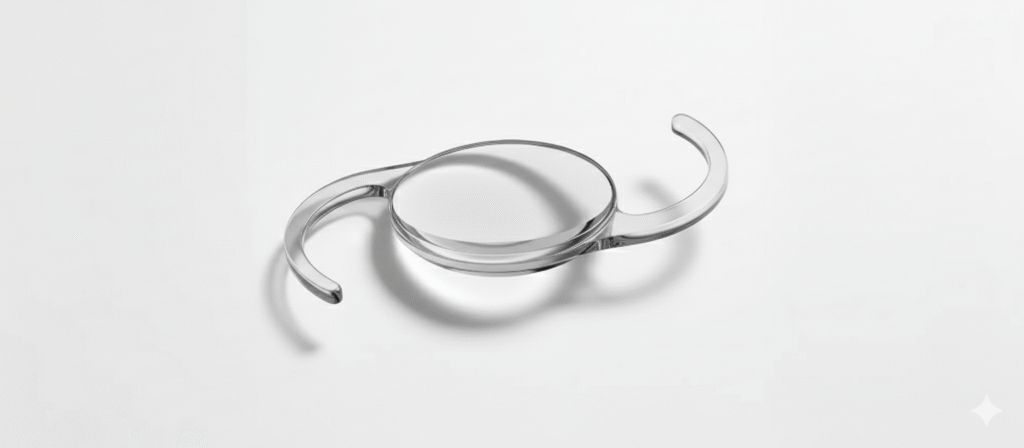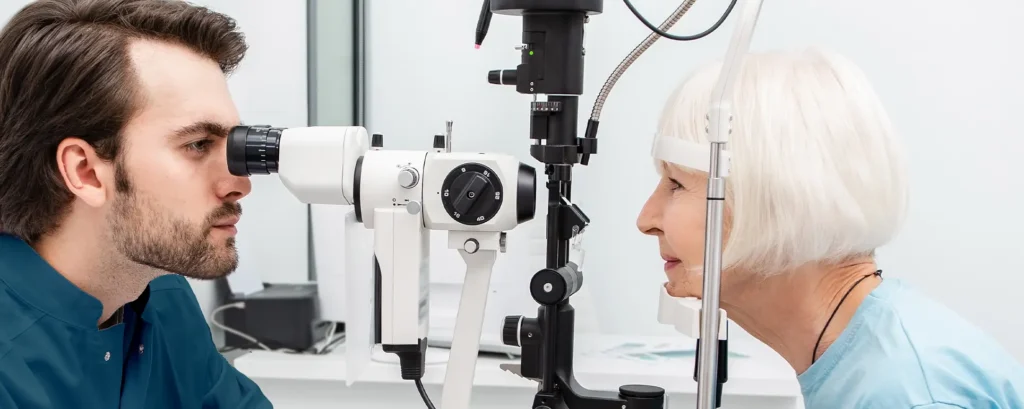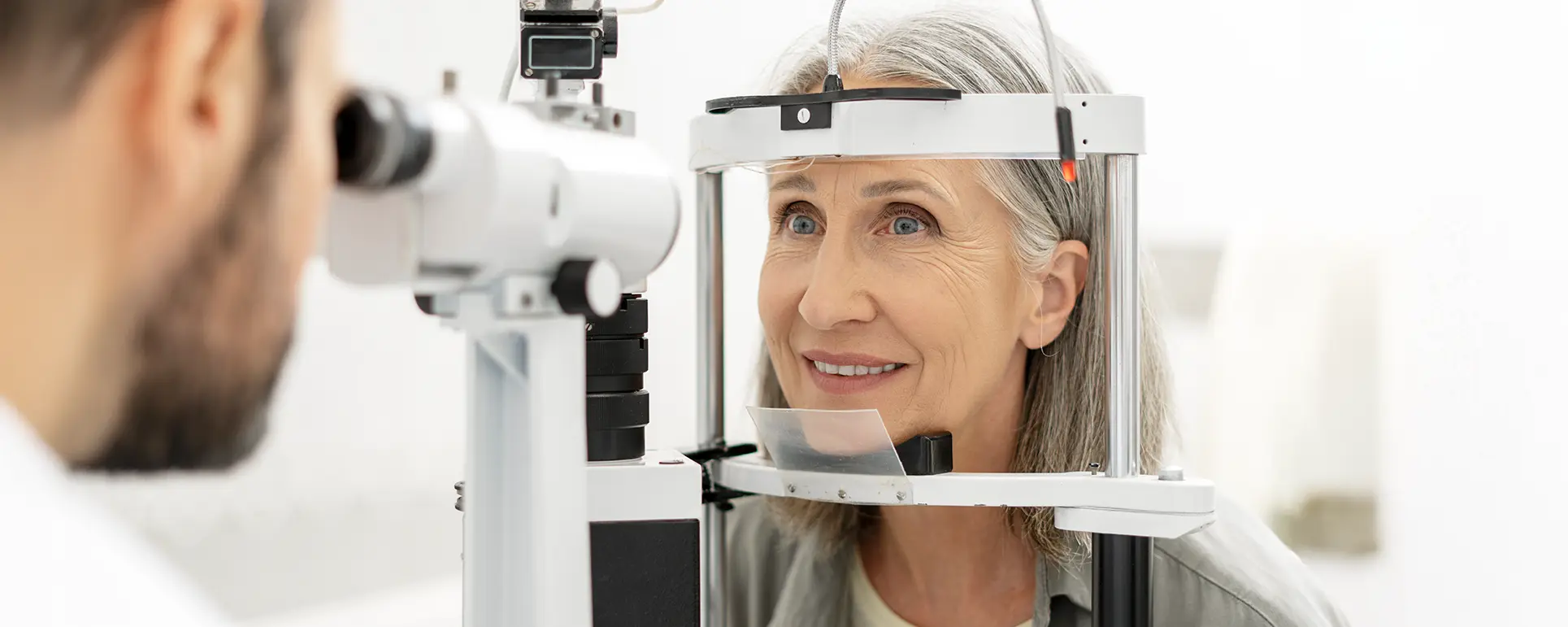When you’re preparing for cataract surgery, the most important choice you’ll make isn’t about the operation itself — it’s about the lens that will replace your cloudy natural lens. Cataracts form when the natural crystalline lens of the eye becomes opaque over time, blurring and distorting vision. Surgery involves removing that cloudy lens and replacing it with an intraocular lens (IOL). For decades, the standard option was a monofocal IOL. While reliable and safe, monofocals only give you clear vision at one distance — usually far — leaving you reliant on glasses for close or intermediate tasks.
Over the past twenty years, IOL technology has developed rapidly. Patients now have access to multifocal lenses, extended depth of focus (EDOF) lenses, toric lenses for astigmatism, and an innovative category called accommodating IOLs. These lenses attempt to do something unique: they respond to the eye’s natural focusing muscles and shift position to provide vision at different distances. Instead of splitting light like multifocal lenses, accommodating lenses rely on movement, aiming to restore a more natural focusing mechanism.
This approach appeals to many patients because it mirrors how the eye once worked before presbyopia and cataracts set in. But while the concept sounds ideal, it comes with its own strengths and limitations. In this article, we’ll take a deep dive into accommodating lenses — how they work, what benefits they bring, where they fall short, and which patients they suit best. We’ll also compare them with other types of IOLs, review real-world results, and look ahead at the future of this technology.
The Natural Lens and the Concept of Accommodation
To understand accommodating IOLs, it helps to look at the natural lens. In a young eye, the crystalline lens is soft and flexible. When you shift focus from a distant object to something close by, the ciliary muscles surrounding the lens contract. This contraction relaxes the tension on the suspensory ligaments (zonules), allowing the lens to become more convex. The increased curvature gives the eye greater refractive power, which brings near objects into sharp focus.
This process is called accommodation. It’s automatic, seamless, and constant throughout your day — whether you’re driving, reading, or switching between your phone and your computer screen. Unfortunately, as we age, the lens stiffens in a process called presbyopia, and its ability to change shape diminishes. By the time cataracts form, the lens is no longer flexible at all.
Accommodating IOLs aim to reintroduce some of this lost functionality. Instead of being fixed in one position like a monofocal, they are designed to shift slightly within the eye in response to the ciliary muscles. The movement may only be a fraction of a millimetre, but that’s enough to alter the focal point and give a broader range of clear vision.
How Accommodating Lenses Work

Accommodating lenses are built with mechanics in mind. Rather than splitting incoming light, they use physical movement to create focus. The two best-known examples currently in clinical use are the Crystalens AO and the Trulign Toric, both produced by Bausch + Lomb.
Crystalens AO uses hinged haptics — the flexible arms of the lens — to allow the optic to move forward and backward within the capsular bag. When the ciliary muscle contracts, it shifts the lens slightly forward, providing more near power. When the muscle relaxes, the lens sits back, offering clear distance vision. This subtle movement mimics natural accommodation, albeit on a smaller scale.
The Trulign Toric takes this concept further by combining accommodative movement with toric correction for astigmatism. For patients who previously would have needed glasses to correct irregular corneal curvature, this lens addresses two problems in one implant.
Not all accommodating IOLs are designed in the same way. Some experimental models feature dual optics, where one lens slides over another to increase the power shift. Others use advanced materials designed to flex more easily. What unites them is the core principle: harnessing the eye’s natural mechanics rather than relying on diffractive or refractive optics.
The Benefits of Accommodating Lenses
The primary benefit of accommodating IOLs is the range of vision they provide. Most patients report excellent distance vision and good intermediate vision, which means activities like driving, watching TV, cooking, or working at a computer can usually be done without glasses.
Unlike multifocal lenses, which divide light into multiple focal points, accommodating lenses use a single optic. This means that visual quality is often described as more “natural.” Patients tend to retain good contrast sensitivity, which is particularly important in low-light conditions. For example, night driving — often problematic with multifocal lenses due to halos and glare — is usually less affected with accommodating designs.
Another significant advantage is that accommodating lenses don’t typically cause the same optical side effects associated with multifocals. Halos, starbursts, and glare are much less common, making these lenses appealing for patients who want functional spectacle independence without compromising quality of vision.
For patients with astigmatism, the Trulign Toric adds another layer of benefit by correcting corneal irregularities. This can dramatically reduce the need for glasses or contact lenses post-surgery, especially for those who had high astigmatism pre-operatively.
Limitations and Trade-offs

As promising as accommodating IOLs are, they are not a perfect solution. Their ability to provide near vision is limited. While distance and intermediate tasks are often handled well, fine near tasks — such as reading small print, threading a needle, or prolonged smartphone use — usually still require reading glasses.
Another limitation is variability. The effectiveness of an accommodating lens depends on the strength of the ciliary muscle and the elasticity of the capsular bag. These factors vary between individuals and decline with age. A patient in their mid-50s may notice a more pronounced effect than someone in their late 70s.
Over time, the capsule surrounding the lens may stiffen or develop opacification (known as posterior capsule opacification, or PCO). While PCO can be treated with a YAG laser, the stiffening of the capsule is not reversible. As the capsule becomes less flexible, the lens’s ability to move diminishes.
Cost is another consideration. Accommodating IOLs are premium lenses, and patients should expect to pay more compared to monofocals, particularly in private practice.
Comparison with Other IOL Types
Choosing the right IOL often comes down to lifestyle priorities. Here’s a simplified comparison:
| Lens Type | Range of Vision | Optical Side Effects | Best For | Glasses Needed |
| Monofocal | One distance (usually far) | Minimal | Patients who don’t mind glasses | Always for near |
| Multifocal | Near, intermediate, far | Halos, glare, reduced contrast | Those wanting maximum independence | Sometimes none |
| Extended Depth of Focus (EDOF) | Distance + extended intermediate | Mild halos/glare | Patients using computers often | Usually for small print |
| Accommodating | Distance + intermediate | Minimal | Those prioritising quality of vision | Often for near tasks |
This table highlights why accommodating lenses are often chosen by patients who want good intermediate vision and crisp optics but are comfortable using reading glasses for very fine work.
Who Is a Good Candidate?
Accommodating IOLs aren’t suitable for everyone. Ideal candidates include:
- Patients with healthy eyes: No significant macular degeneration, advanced glaucoma, or diabetic retinopathy.
- Patients in their 50s or early 60s: Younger cataract patients often have stronger ciliary muscles, making accommodation more effective.
- Patients with realistic expectations: Those who value quality vision and are happy to wear reading glasses when needed.
- Patients who drive at night: Because these lenses cause fewer halos and glare, they suit night drivers well.
- Patients with astigmatism (for Trulign Toric): This option corrects both presbyopia and astigmatism.
Your surgeon will carry out detailed eye measurements and scans to determine whether your ocular anatomy makes you a good candidate.
The Surgical Procedure
From a surgical perspective, implanting an accommodating IOL is similar to implanting a monofocal lens. The surgeon removes the cloudy cataract, cleans the capsular bag, and inserts the IOL.
However, precision is especially important. The lens must be well-centred and securely held by the capsule to ensure its accommodative mechanism works effectively. With the Trulign Toric, careful rotational alignment is crucial to correct astigmatism accurately.
Surgeons often recommend premium diagnostic tools and intraoperative guidance systems for these procedures. Choosing an experienced surgeon with a track record in premium lens implantation can significantly influence the outcome.
Real-World Performance
Clinical trials and patient reports show high satisfaction rates with accommodating IOLs, particularly for distance and intermediate vision. Many patients are glasses-free for most daily activities, needing spectacles only for reading fine print.
Contrast sensitivity — a measure of how well you see in dim light or fog — tends to be preserved better than with multifocal lenses. This translates into clearer, sharper vision in challenging lighting conditions.
However, satisfaction drops when patients expect full spectacle independence. Those who are told they will likely still need reading glasses generally report better experiences than those promised “glasses-free” vision. Setting expectations is critical.
Future Directions in Accommodating IOLs
Research is ongoing to improve the accommodative range of these lenses. Newer designs include dual-optic systems, advanced flexible materials, and even electronic IOLs that could change power in response to signals.
Hybrid lenses are also being explored — combining accommodative mechanisms with EDOF technology to create lenses that offer both natural optics and extended ranges of focus. These are still in trials but represent exciting possibilities for the future of cataract surgery.
Frequently Asked Questions
1. What exactly is an accommodating intraocular lens?
An accommodating intraocular lens (IOL) is a special type of lens implant used in cataract surgery. Unlike a standard monofocal IOL, which remains fixed and only provides clear vision at one distance, an accommodating IOL is designed to move slightly in response to the natural focusing muscles of the eye. This small forward or backward shift allows you to see more clearly at different distances. While it doesn’t restore the full flexibility of the natural lens you had in youth, it gives you better functional range than a simple monofocal lens. Most people notice strong improvements in distance and intermediate vision, and in some cases a modest benefit for near vision as well.
2. How much freedom from glasses can I expect with an accommodating IOL?
Accommodating lenses reduce your dependence on glasses, but they don’t always eliminate them entirely. Most patients find they can carry out everyday activities such as driving, using a computer, watching television, and moving around indoors without the need for spectacles. However, you will almost certainly still need glasses for tasks that require fine close-up focus, such as reading small print or prolonged smartphone use. The degree of spectacle independence varies from person to person, depending on how well their eye muscles work with the lens. A realistic way to think about it is that you’ll likely need glasses less often, but not never.
3. How do accommodating lenses compare with multifocal lenses?
The difference lies in how they achieve their effect. Multifocal lenses split light into different focal points, which gives good vision at multiple ranges but can sometimes cause halos, glare, and reduced contrast. Accommodating lenses, on the other hand, rely on natural movement inside the eye. This usually results in cleaner, more natural vision with good contrast sensitivity, especially in dim light. The trade-off is that accommodating lenses generally don’t provide as strong near vision as multifocals. Which is better depends on what matters more to you: maximum freedom from glasses, or quality of vision without optical side effects.
4. Will I notice glare or halos with an accommodating lens?
Most people do not experience significant glare or halos with accommodating lenses, which is one of their biggest advantages over multifocal designs. Because accommodating IOLs use a single optical surface rather than concentric rings, they don’t split light in a way that creates visual artefacts. This makes them particularly well-suited to patients who drive at night or spend time in dimly lit environments. Of course, every patient’s experience is unique, and some may notice mild visual disturbances, especially in the first few weeks after surgery. But in general, these lenses are chosen by people who want to minimise the risk of halos and glare.
5. Do accommodating IOLs correct astigmatism as well?
The standard accommodating lenses do not correct astigmatism on their own, but the Trulign Toric accommodating lens is designed specifically for this purpose. If you have astigmatism, the toric component of the lens can correct the irregular curvature of your cornea, giving you sharper distance vision at the same time as offering accommodative movement. This makes it a particularly attractive option for patients who previously needed glasses or contact lenses for both astigmatism and presbyopia. Your surgeon will carry out measurements to decide whether the Trulign Toric or another option is most appropriate for you.
6. How long will an accommodating lens keep working after surgery?
An accommodating IOL is designed to last for life, so you won’t need it replaced once it’s implanted. However, the accommodative effect can decline over time. This isn’t because the lens itself wears out, but because the capsule that holds it in place naturally stiffens with age. As the capsule becomes less flexible, the lens may not move as effectively in response to the eye’s focusing muscles. Even if this happens, the lens will still provide excellent distance vision, and you may just find you need reading glasses more often as time goes on.
7. Who should avoid accommodating IOLs?
These lenses are not suitable for everyone. Patients with conditions that affect the retina, such as age-related macular degeneration, advanced diabetic eye disease, or significant glaucoma, are usually not good candidates. That’s because the overall visual system may already be compromised, meaning the benefits of the lens won’t be fully realised. They also tend to work best in patients who still have reasonably strong ciliary muscle function, which is why younger cataract patients often notice better results. A detailed consultation with your surgeon will determine whether this type of lens is appropriate for your eyes.
8. Can I have one accommodating lens and a different type in the other eye?
Yes, and in fact this is sometimes recommended. Some surgeons adopt a “mix-and-match” approach to give patients the best of both worlds. For example, you might have an accommodating IOL in one eye to ensure crisp distance and intermediate vision, and an extended depth of focus lens in the other to improve near vision. This blended strategy can reduce your overall dependence on glasses while still preserving high-quality optics. It isn’t right for everyone, but it can be very effective in carefully selected patients who want a tailored visual outcome.
9. What happens if the lens stops accommodating properly?
If the lens loses some of its accommodative function, you’ll simply find yourself reaching for glasses more often. Importantly, you won’t lose the distance clarity that the lens provides, since that remains stable. In many cases, the lens still provides intermediate vision even if near vision becomes more reliant on spectacles. Some patients may also develop posterior capsule opacification (PCO), which can interfere with the lens’s movement. A quick laser procedure called a YAG capsulotomy can usually resolve the PCO, although it doesn’t restore the original capsule flexibility.
10. How do I decide if an accommodating lens is right for me?
The best way to decide is to think carefully about your daily activities and what you value most in your vision. If you want the highest possible quality of vision, especially in dim light or when driving, and you don’t mind using glasses for reading, accommodating lenses may be a strong choice. If you want maximum independence from glasses, you may lean towards a multifocal or EDOF option. Ultimately, the decision should be made in consultation with your cataract surgeon, who will assess your eye health, measurements, and lifestyle needs before making a personalised recommendation.
Final Thoughts
Accommodating IOLs offer a unique balance between optical quality and functional range. They won’t make you completely glasses-free, but they can deliver excellent distance and intermediate vision with fewer optical compromises compared to multifocal lenses. If your lifestyle involves lots of driving, computer use, or tasks in varied lighting conditions, they may be the right option.
The key is matching the lens to your visual priorities. At London Cataract Centre, we guide patients through these decisions every day, offering clear advice on which lens is best suited to their needs. If you’re considering cataract surgery and want to explore whether accommodating lenses are right for you, our team is here to help.
References
- FDA. Premarket Approval (PMA) – Crystalens Models AT50AO / AT52AO. Available at: https://www.accessdata.fda.gov/scripts/cdrh/cfdocs/cfpma/pma.cfm?ID=P030002S021 [Accessed 17 October 2025].
- Bausch + Lomb Surgical. Crystalens and Trulign IOLs. Available at: https://www.bauschsurgical.com/cataract/crystalens-and-trulign/ [Accessed 17 October 2025].
- FDA / Bausch + Lomb (physician labeling). Trulign™ Toric IOL – Physician Labeling. Available at: https://pi.bausch.com/globalassets/pdf/PackageInserts/Surgical/4115601-Trulign-Toric-DFU-US.pdf [Accessed 17 October 2025].
- CRSToday. “Another Toric IOL Modality Now Available.” CRSToday, June 2013. Available at: https://crstoday.com/articles/2013-jun/another-toric-iol-modality-now-available [Accessed 17 October 2025].

